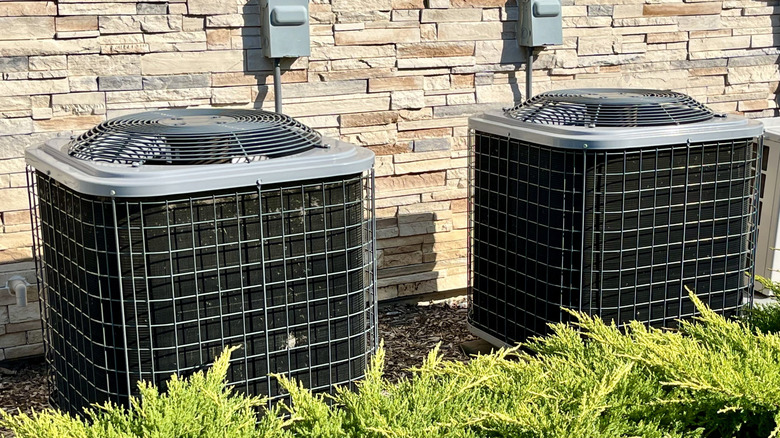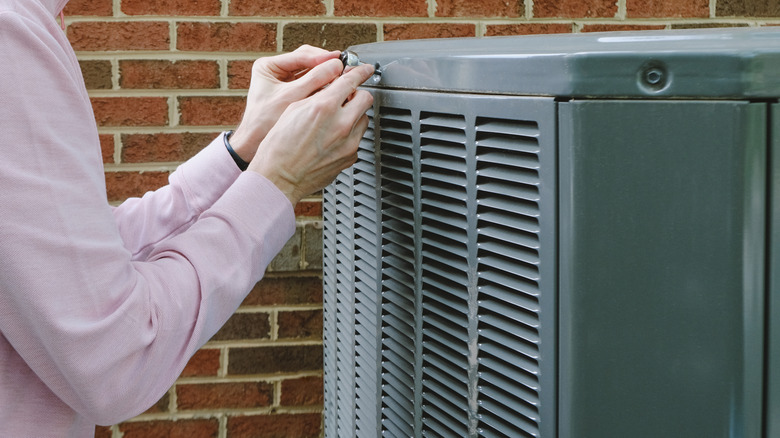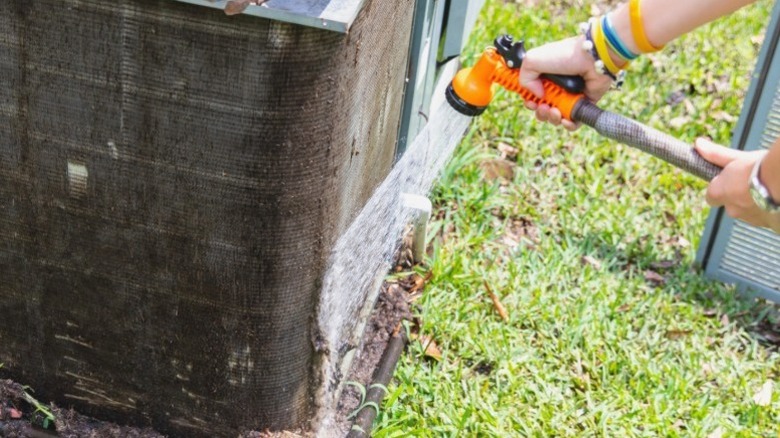Can You Lower Your A/C Costs By Cleaning Your Outdoor Unit? Here's What To Know
We may receive a commission on purchases made from links.
When you want to keep energy costs reasonable while staying cool and comfortable, finding effective A/C efficiency tips to beat the summer heat should be top of mind. Unblocking cooling vents, regularly changing the A/C filter, and scheduling annual maintenance visits all work to improve your system's cooling capability. In addition to those steps, one of the best ways to improve the efficiency of your air conditioner is to keep the outdoor unit clean. Rinsing the outdoor unit of the air conditioner with gentle water pressure from a garden hose removes dirt and other debris, allowing the components to release heat efficiently. If you notice grass clippings that are stuck to the outdoor unit after mowing, for example, you may want to quickly hose them off (and possibly consider a mulching mower with a closed deck to ensure clippings fall onto the lawn instead of flying around).
How often should you clean your A/C coils beyond a gentle rinsing? Cleaning the coils on the outdoor unit at least once a year can help optimize the operational efficiency. Keeping the external unit clean and free of debris should extend the lifespan of the unit, too, which will save you money by putting off the need to replace the unit prematurely.
How the condenser coils on the outdoor A/C unit work
Why do the coils on the A/C's outdoor unit need to be clean to help the unit work efficiently and cut down on your cooling bills? To see the benefits, you need to understand how an A/C works. On the interior segment of the central air conditioner, warm indoor air passes across the evaporator coils. Liquid refrigerant absorbs the heat, turning into a gas. The system passes the refrigerant to the condenser coils on the outdoor unit. The compressor increases the refrigerant's pressure to raise its temperature further before it enters the condenser coils, allowing it to release even more heat to the outside air before returning to a liquid.
The condenser coils are protected inside a metal box that covers the outdoor unit. The box has a vast array of thin fins around the walls. Heat spreads from the coils across the fins, increasing the exposed hot metal surface area to facilitate faster release of that heat outside. A blower fan drives the outdoor air circulation to move the heat away from the fins. When the fins have clogs from dust, sand, and lawn clippings, they interfere with the unit's ability to release the heat from the condenser coils. The system has to work harder and use more energy, which drives up the cost of operation and contributes to some of the most common air conditioning failures.
How to safely clean the exterior A/C unit
Before cleaning the fins on the exterior A/C unit, you should turn off the cooling system by cutting power at the circuit breaker. Turn on a garden hose, and rinse the exterior of the unit. Even though the garden hose alone doesn't ramp up the pressure of the water stream, it should work well for rinsing away grass clippings, leaves, and dust. You also can use a sprayer nozzle on the end of the hose on its widest setting to keep the intensity of the water pressure at a minimum.
When you want to do a thorough cleaning to try to save even more on your cooling bills, try a condenser coil cleaning product, like Foam Blaster A/C Coil Cleaner. If desired, remove the covers from the exterior unit by undoing the bolts or screws holding them in place. Spray the coils and fins with the coil cleaning spray, following the directions for the cleaner. Most products should typically sit on the metal for 10 to 15 minutes before you rinse the spray away with water from a garden hose. Never use a pressure washer to clean the outdoor A/C unit, no matter what kind of debris it has on it. The water pressure from this machine could damage the fins on the air conditioner's exterior cover.


